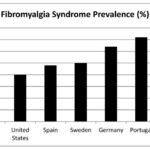Kidney stones, also known as renal calculi or nephrolithiasis, are a common and painful condition. While the symptoms of kidney stones can be quite distinctive, it’s crucial to consider a differential diagnosis to rule out other medical issues that may present with similar signs. Accurate diagnosis is essential for effective treatment and to prevent potential complications.
One of the primary conditions in the Kidney Stone Differential Diagnosis is a urinary tract infection (UTI), particularly pyelonephritis (a kidney infection). Both kidney stones and UTIs can cause flank pain, hematuria (blood in the urine), and dysuria (painful urination). However, UTIs are more likely to present with fever, chills, and urinary frequency and urgency, symptoms that are less common with uncomplicated kidney stones. Urinalysis is a key differentiating factor, showing bacteriuria and pyuria in UTIs, whereas kidney stone urinalysis may primarily show hematuria and crystals.
Another important consideration in the differential diagnosis of kidney stones is appendicitis, especially when the pain is located in the right lower abdomen, potentially mimicking a ureteric stone in the lower right urinary tract. Appendicitis typically presents with abdominal pain that starts periumbilical and migrates to the right lower quadrant, along with nausea, vomiting, and fever. Physical examination findings, such as McBurney’s point tenderness, and imaging studies like CT scans are helpful in differentiating appendicitis from kidney stones.
Musculoskeletal back pain can also be confused with kidney stone pain, especially if the kidney stone is causing flank pain radiating to the back. However, musculoskeletal pain is usually related to movement or posture and lacks the colicky, wave-like nature of renal colic. Physical examination and pain provocation tests can help distinguish musculoskeletal pain from kidney stone pain.
In women, ectopic pregnancy should be considered in the differential diagnosis of kidney stones, especially if presenting with flank or abdominal pain and vaginal bleeding. Pregnancy tests and pelvic ultrasounds are crucial to rule out ectopic pregnancy in women of childbearing age presenting with symptoms that could mimic kidney stones.
Other conditions that may need to be considered in the kidney stone differential diagnosis include:
- Gallbladder disease (cholecystitis, biliary colic): Can cause right upper quadrant pain that may radiate to the flank.
- Bowel obstruction: May cause abdominal pain and vomiting, but typically lacks the hematuria associated with kidney stones.
- Pancreatitis: Can cause severe abdominal and back pain, but is often associated with nausea, vomiting, and elevated serum lipase.
Diagnostic tools are vital in differentiating kidney stones from other conditions. Urinalysis is a primary step. Imaging, such as non-contrast CT scans of the abdomen and pelvis, is often the gold standard for confirming kidney stones and ruling out other abdominal pathologies. Ultrasound and abdominal X-rays can also be used, particularly in situations where CT scans are contraindicated or less readily available.
In conclusion, while kidney stones present with characteristic symptoms, a thorough differential diagnosis is essential to exclude other conditions that may mimic them. Considering conditions like UTIs, appendicitis, musculoskeletal pain, and ectopic pregnancy, alongside appropriate diagnostic testing, ensures accurate diagnosis and timely, effective management for patients presenting with flank or abdominal pain suggestive of kidney stones.
